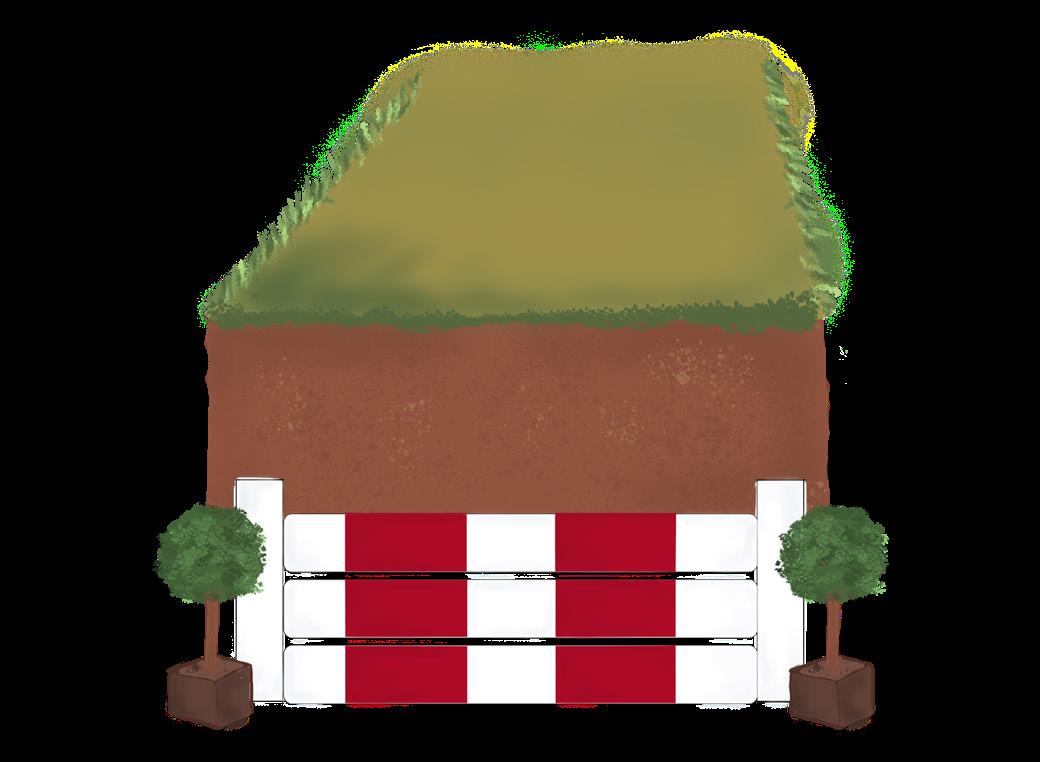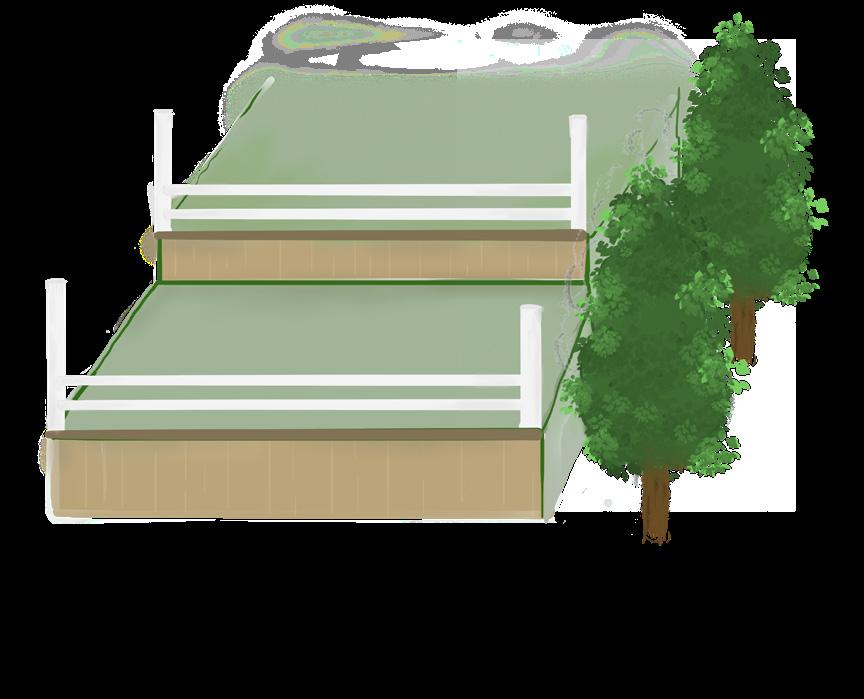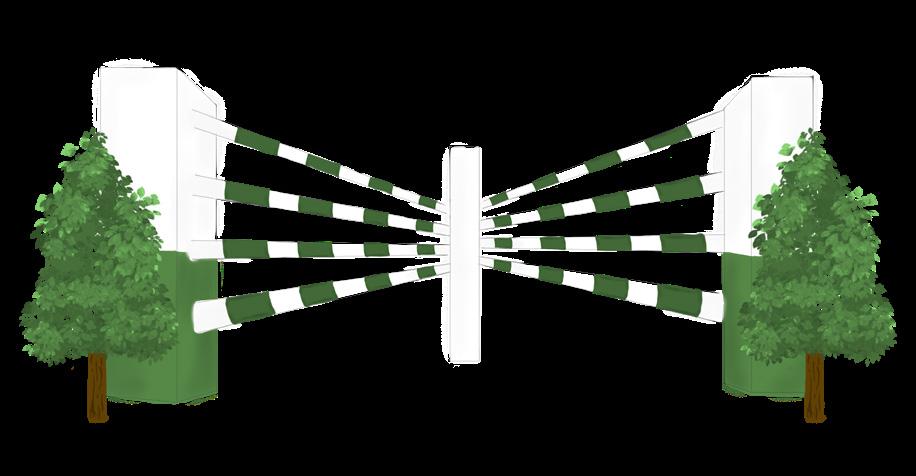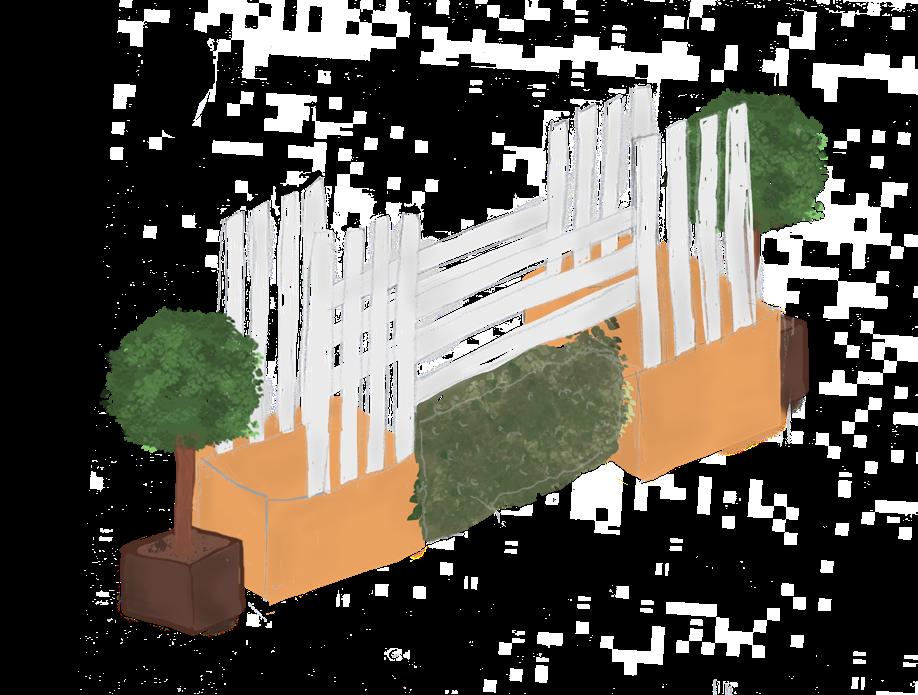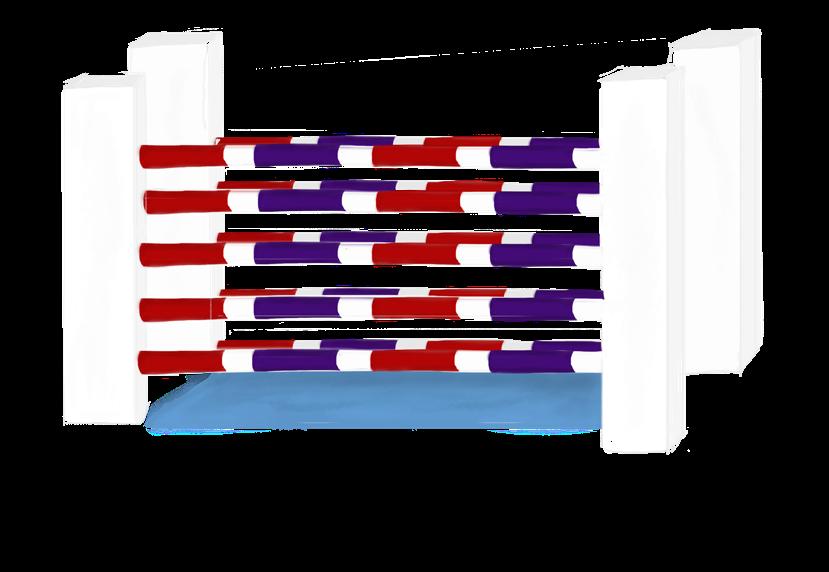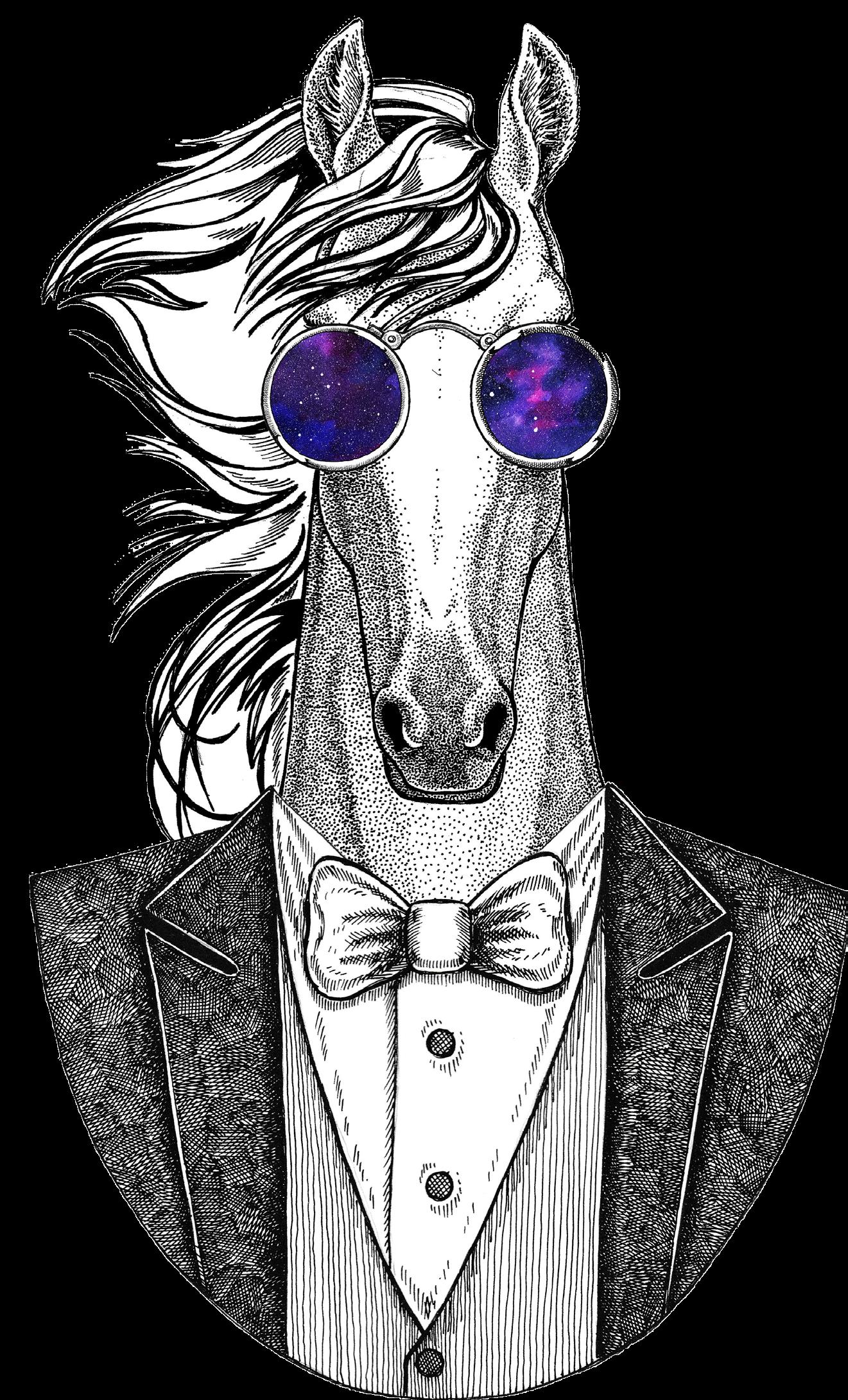EDITION 18 | NOVEMBER 2022





Hello, and welcome to another edition of HQ Pony Magazine!
It is, as always, splendiferous to have you with us for another month. With another print copy about to hit the shelves, life is busy in the HQ Pony office, and we really appreciate your support.
This issue has some great content for you to enjoy. Firstly, we meet the inspirational Zara Pappalardo, whose talents seem to know no bounds. Then we join forces with Hannah Botha from Epol to talk about how you fill a hay net. We have a new breed of the month with the Dutch Warmblood and a stunning article on how to bond with your pony.
There’s so much fun and learning within these pages (even if we do say so ourselves), so dive in now and check it out.
With lots of love,
We’d love to hear from you and receive your photos, drawings or pony-related thoughts. To get in touch send an email to lizzie@hqmagazine.co.za and we’ll get back to you!
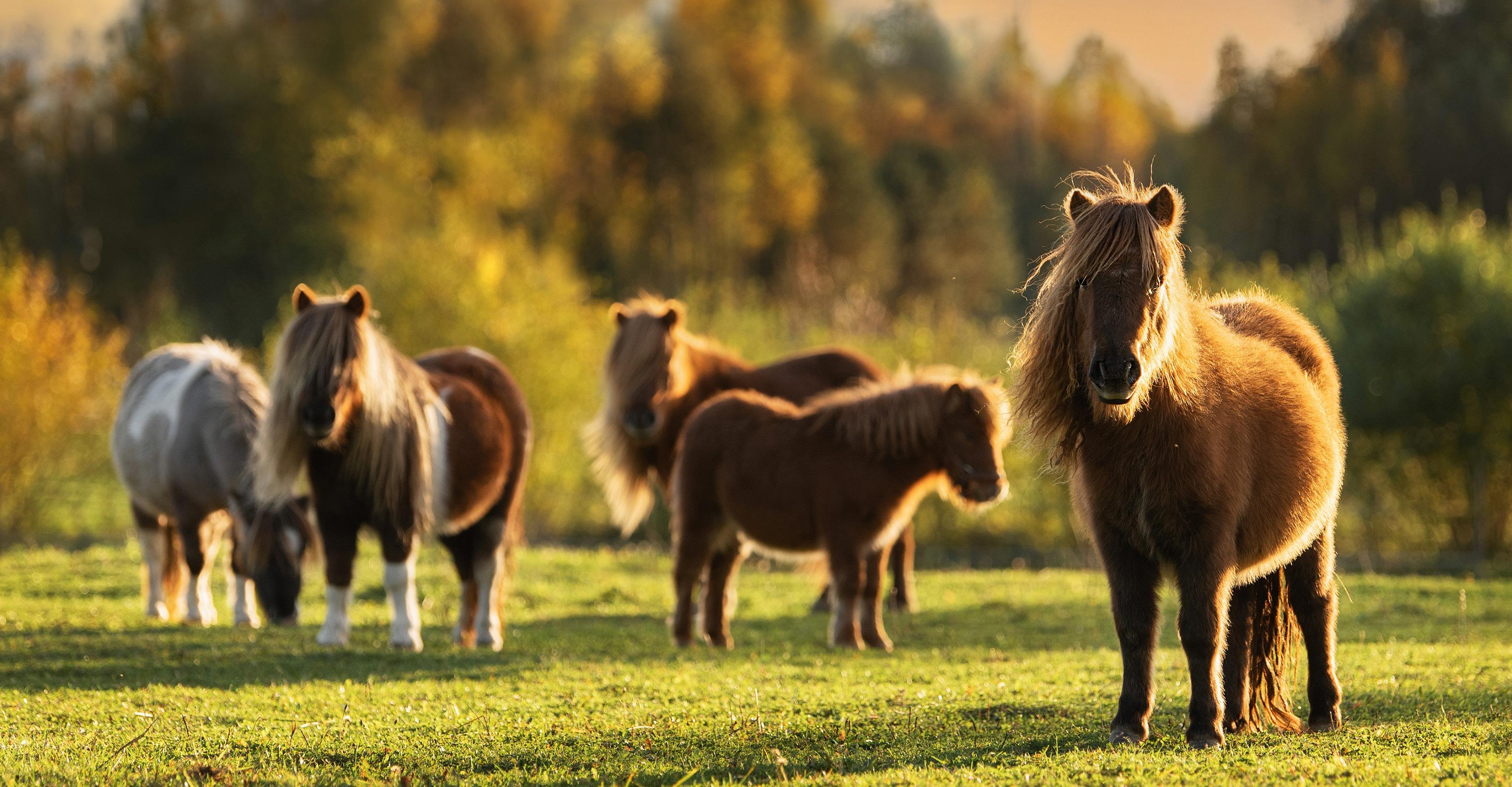
We take pride in our quality, personalised friendly service and uniqueness. No order is too big or too small. Embroidery is offered on all items. Let us design your yard’s numnahs, shirts, daysheets and ears
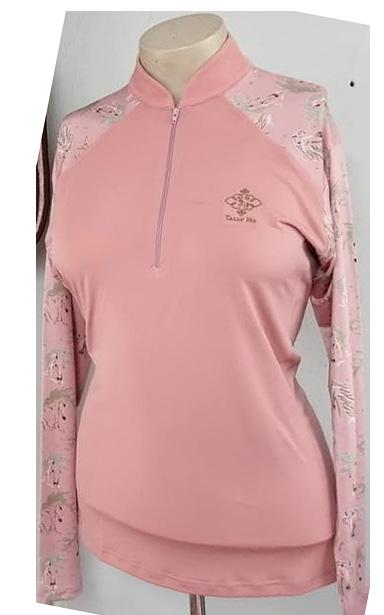



Whether it's for shows or daywear this is the place to buy your goods. We have stunning prints, colours, shapes and designs to choose from.

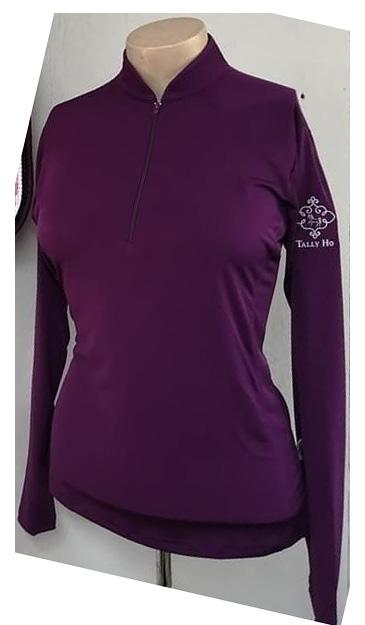

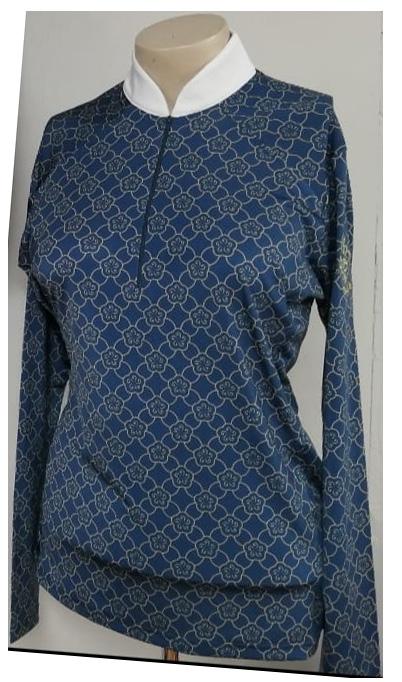
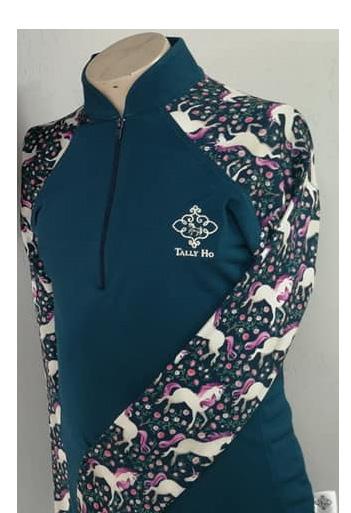


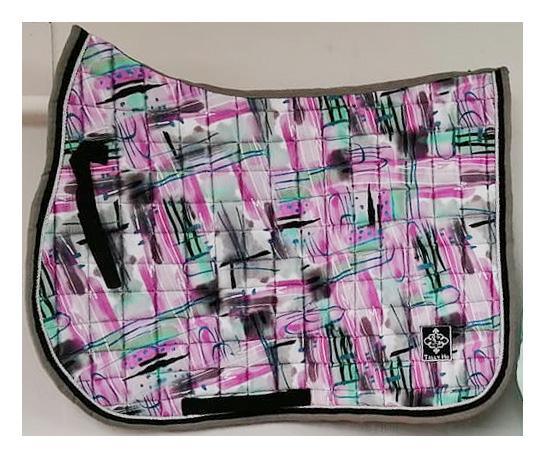


There are few people who have won as many trophies as Zara Pappalardo or done as much for our sport. And just to make this even more impressive - Zara is only 12 years old! We can’t wait to see what Zara’s riding future holds, and we loved catching up with her in this interview. She’s a real inspiration!


HQPony: How old are you?
Z: I’m 12.
HQPony: And how old were you when you started riding?
Z: I went to my first show when I was 18 months old on Nick, my first pony. My mom taught me at home. Nick is still with us and is 37 years old!
HQPony: And tell us about your ponies?
Z: My ponies are Carel Hancke Donatello and Rooigras Elle. Donald is 13, and Elle is 14. Donald gives me kisses and bobs his head up and down for carrots. He likes to break things, like his fly mask. We bought him a new one yesterday, and it is already broken. When he is clean, he is a shiny, pink, rose-gold colour, but when he is dirty, he looks brown. He always rolls.
Elle is a bit of a princess! She isn’t super cuddly. We like to ride in pink. They are both Boerperds and both sponsored by Regenesis Vet.
HQPony: Which disciplines do you compete in?
Z: Donald just does dressage, but Elle does jumping, showing, eventing and dressage –everything! Elle even does fancy dress [Zara had just returned from a Halloween ride dressed as Nymphadora Tonks (from Harry Potter) when we spoke to her].

HQPony: What’s your favourite discipline?
Z: Eventing. Elle is very fast and brave in the country. She nearly got time penalties in the last show for going too fast – I couldn’t slow her down. Whenever she leaves the box at the eventing, she bucks because she is excited, so they call her the bucking bronco.

HQPony: Who are your coaches?
Z: I have lessons with Zdenek Muchna, and I have dressage lessons with Marianne Conlyn.

HQPony: What are your goals for next year?
Z: I’d like to be in the 1.10m classes with Elle and doing EM dressage with Donald.
HQPony: Do you have any other hobbies?
Z: I do athletics, piano lessons and public speaking, as well as riding. I also play with my dogs and jump them!
HQPony: You must have to be very disciplined to do all that.
Z: Yes. I have to plan my time.
HQPony: Why is your horsey role model?
Z: Zdenek (Muchna) is my role model. I want to ride like him one day.
HQPony: If you could ride any horse in the world at a show, who would it be?

Z: It would be Arma (Armageddon), my mum’s horse. He’s retired now. He’s 21.
HQPony: We hear you made lots of money for Highveld Horse Care Unit (HHCU). What did you do to raise the money?
Z: I went to Derby and spoke, spoke at school and went to the SANESA prize-givings to sell lots of raffle tickets for Highveld Horse Care (HHCU). We raised R145,000 cash, excluding the printing we did for the horseboxes and the roll-up banners. With Aiden, we also got onto Equestrian Live to talk about HHCU.
HQPony: And we believe you produced a pony yourself from scratch?
Z: Yes – I produced Countess of Dia. I’m so happy because she is now doing very well with her new rider Gabriella Bianco.
HQPony: And we have to ask about Boesman? We love your old pony Boesman!
Z: Boesman was my first proper competition pony. We don’t know exactly how old he is because he was a rescue pony, but we think he is around 28 now. Boesman sleeps in the paddock at random hours of the day. He also lets himself out of the stable, or climbs out of the stable. When he gets out, he grazes; he doesn’t run around, so that’s good. I love Boesman.
HQPony: Can you tell us about some of your results from this year?
Z: I won National Victor Ludorum for SANESA. We took Elle to Boerperd dressage. We won Elementary dressage.
HQPony: What was one of your riding highlights of the year?
Z: I rode Rooigras Skildery, who was a traditional Boerperd at the national show in the Afridome in Parys. He belongs to the Stud. The traditional Boerperds go a bit more like Saddlers with a very big trot, so it was very different and fun. I rode him once and then rode him for the show. I want to go again to that show! I did the three-gaited classes, but there are five-gaited classes too – and the horses make so much noise. They’ve asked me to do the five-gaited next year, so I can’t wait for that. They have some very pretty horses but also some very naughty horses! They have very peculiar names.
Zara is sponsored by Equestrian House as a brand ambassador. She loves her Kask helmets, Equipe saddles, Ego 7 breeches and boots, and Kurden jacket. Her ponies are maintained by Regenesis Vet.kshf


Our photoshoot was quite scary. We used chalk powder, but Donald was very good!


Your pony is more than just a pony…
Text | Rhiannon CecilMaking the time to bond with your pony outside of riding time can only change your relationship for the better. Ponies are herd animals, which means they’re happiest when you all understand each other and speak the same language. When you only interact with your pony while riding, he learns to associate you with work and nothing more. Wouldn’t you rather he sees you as someone to love and who loves him? Change the dynamic of your relationship by letting him get to know you on the ground, and you’ll find he starts to trust you more under saddle as well.
It may seem daunting in the beginning, but bonding with your pony on the ground isn’t all that difficult. Just take a bit of time every day before or after you ride to learn about and just interact with each other. Have a look at these simple ways to strengthen the bond:
Ponies make associations in their minds all the time, and the last thing you want is for your pony to see you coming and automatically think about how hard he’s going to work. Thinking this way will quickly change the way he sees you, and might cause him to have negative associations with your presence at the yard. Instead, show up with no expectations sometimes. Come to the yard just to give him carrots and play with him. It won’t take long before he starts looking forward to seeing you. It’s exciting now because he never knows what’s going to happen when you visit. All he knows is he’s looking forward to seeing you, and he’s not bored. When you do work him, he’ll be much happier to do the job if he also associates you with fun times and carrot visits.
The more time you spend with your pony, the better. Every time someone else fetches your pony from the paddock and grooms him, he is creating a relationship with that person. Of course, we all need help with our ponies, especially when we have school, work and other commitments, but spend time grooming and playing with your pony whenever you can, so he realises you’re not just someone who comes to ride him; you’re a human being who genuinely cares about him.
Grooming is a very important part of how horses bond and communicate with each other in the wild. Have you ever seen two horses grooming each other, nibbling each other’s necks? This behaviour is called allogrooming, and human beings do it too. Allogrooming helps horses understand each other’s place in the herd and is a form of giving affection. So, if you groom your horse, you’ll become part of his mental herd in no time.
Walking with your pony in hand changes the way you interact with each other. It also allows your pony to trust you more because you’re on the ground together, which means, in his mind, you’re protecting him, and you’re facing the world together. He also gains valuable insight into your body language and facial expressions that he doesn’t get to see when you’re riding him.

Remember how sensitive ponies are to body language and feelings? When you’re at a show, and you get nervous, you can see your pony pick up on it. The same thing happens when you play. Your pony picks up on all your carefree happiness, and slowly he’ll start opening up to you. All of a sudden, you’ll have a happy, carefree pony prancing around with you.

Note: When you’re playing with your pony, start slowly, and always make sure you’re wearing a helmet and closed shoes. The best way to start playing with your pony is to go into his paddock and copy what he does. He’ll be interested in what you’re doing and come over to take a closer look. Just keep moving around his paddock and let him follow you. If you’re comfortable, and his ears aren’t back, you can start jogging. He might start copying you, and just like that you’ve got a game!
Ponies spend a lot of their time just grazing together. If you insert yourself into this ritual,
Bonding with our horses and ponies is exciting, and we often want to see results straight away. Unfortunately for us, this is not how a pony’s mind works. They need time to come to you on their terms, so be careful of rushing things. Now that you’ve decided to spend some time bonding with your pony on the ground, pay attention to this list of tips:
• Don’t try and bond with your pony when you’re in a bad mood or you’ve had a bad day at school. Your pony can pick up that you’re angry through your facial expressions and heart rate. He’ll be anxious, and this will affect your bonding session.
• Start and end every session - whether ridden or groundwork - with a positive interaction. Give him a scratch and a carrot at the beginning and end of your time together every time.
• Let your pony interact with you and create a bond at his pace, not yours. None of us ever know our pony’s full history, and it will take some ponies longer to open up and trust than others.
• Use your hands to interact with your pony - touch, tickle, scratch, groom and massage. This is how ponies bond with each other, and the more you can mimic that behaviour, the more comfortable your pony will be.
• Don’t lose your temper when your pony doesn’t respond the way you hoped in a bonding session. You’ll have to build his trust all over again if you do.
• Pay attention to your pony’s body language when you’re interacting with him, and you’ll get a great deal of useful information about what he likes and dislikes, which will only strengthen your relationship in the future.
• Introduce your pony to new and potentially scary things when you’re bonding on the ground. This gives you the opportunity to comfort and reassure him, which in turn means he’ll trust you more.
• Don’t get flustered and rush into sessions with your pony. Take your time to get into the right mental space, or you’ll both be anxious before you even start.
• It’s a good idea to use treats and positive reinforcements when working with your pony. Ask an instructor to show you how to do this safely if you haven’t done it before!
It doesn’t matter how you start; just start however you’re comfortable and take it from there. There are no rules (aside from safety) when it comes to bonding with your pony. It’s your relationship, and to get the most from it, you need to know each other inside and out. It takes time to get to this point, but it’s time well invested because, at the end of it all, your connection will be so strong you’ll be flying, both at shows and in your day-to-day lives.



Breed name: Dutch Warmblood
Breed purpose: Competition
Size: 16 hands
Coat colour: Bay, brown, black, grey, chestnut with or without white markings. Tobiano colouring is also possible.
Place of origin: Holland
Ancestors: Gelderlander, Groningen, Thoroughbred, French and German Warmbloods
Dutch Warmbloods have been produced through a very strict breeding programme in the Netherlands. Their origins can be traced back to the Netherlands during World War II. The breed was formed as a result of crossing the Gelderlander, a medium-sized carriage horse with the Groningen, a larger, heavier horse used for farming. Over time breeds such as Thoroughbreds and Hackneys were added in to create one of the most successful competition horses in the world.
Charlotte Dujardin’s Valegro is a Dutch Warmblood. He won individual gold at both the 2012 and 2016 Olympics, team gold in 2012, and was a double World Champion in dressage.
Moorlands Totilas was another Dutch Warmblood and was considered to be one of the best dressage horses in the world. He and his rider, Edward Gal, were the first ever to score above 90 in a dressage competition.
The Dutch Warmblood is known for being athletic and having good stamina. They are wellproportioned, with a refined head and a muscular arched neck. They have a smooth topline and their shoulders are long and sloping, which gives them beautiful, expressive movement.

They have a reputation for working well with their riders and having a good temperament and kind nature. They are easy to train and intelligent. They excel in both dressage and showjumping and have won gold medals at the Olympics.
Dutch Warmbloods used to have a symbol of a lion in a shield (as found on the Netherlands’ royal coat of arms) on their hindquarters. Branding is now illegal in the Netherlands (yay!), so today Dutch Warmbloods are microchipped.
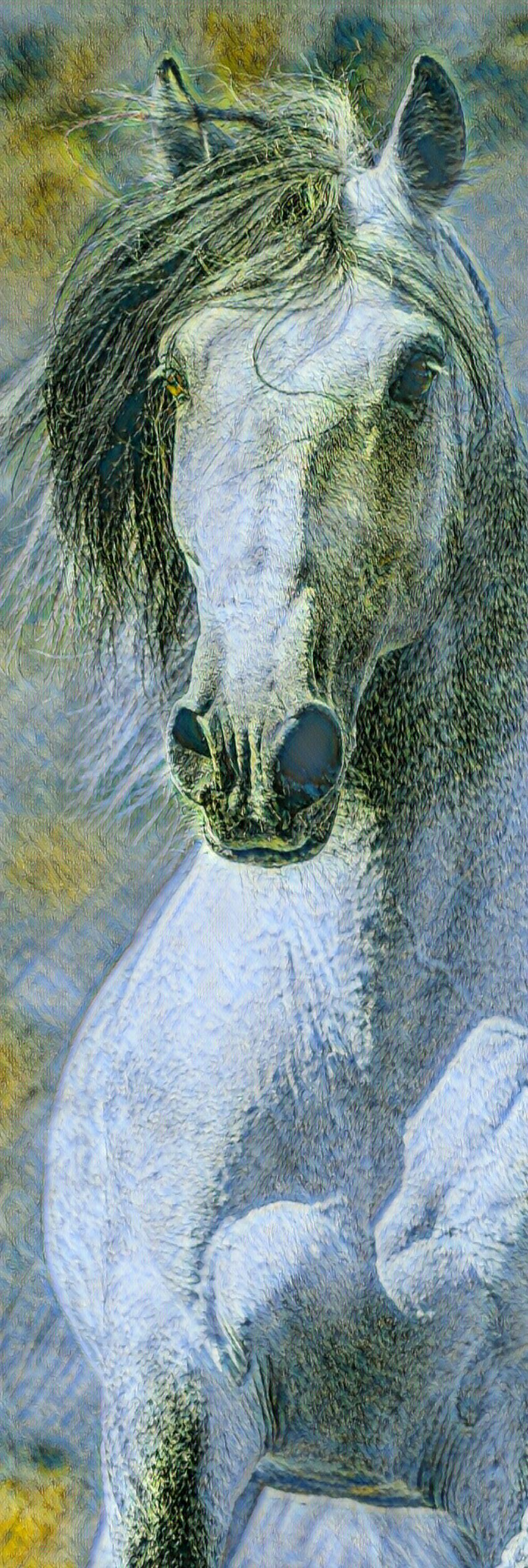

Whether you have your own pony or you’re looking for a new riding school, there are so many options out there that it can be completely overwhelming. Regardless of what your goals are for your riding career, there is a place out there that suits you perfectly. You just have to find it.
HQ Pony Mag takes you through some tips for choosing your next stable yard.
When you’re looking for a new stable, go and visit as many different yards as you can. That way, you get to see things for yourself and get an idea of the vibe of the place. For instance, if you are looking for somewhere very competitive, you don’t want to choose a stableyard that prefers not to be at shows every weekend. Also, notice who takes the time to show you around when you make an appointment. Is there someone there to answer your questions, or are you just left to wander around on your own? We spend a lot of time at our stable yards and want to feel included and important. You should be treated like that from the moment you walk through the door.
Most stableyards and riding schools have a focus; some focus on showjumping, some on dressage, and others on simply riding and getting the basics in place. Ask yourself where you want to go in your riding career and what your passions are. If you want to take part in a wide range of disciplines, you aren’t likely to be completely happy at a stable that focuses solely on dressage. Make sure any stables or schools you’re looking at meet your needs so that you can achieve your goals there.
None of us wants to be part of a stable where ponies aren’t treated well. For example, when you visit, look out for ponies who are underweight. How good is the fly control? Do the ponies have big enough paddocks with enough grazing and clean water? Are there fresh, clean shavings in the stables? Are the bits clean? Think about all the things you would want your pony to have if he was stabled there. If you don’t think he would get what he needs, the yard isn’t for you.
No matter what you’ve heard about the stable, make sure you get a chance to watch a lesson and ride in one. Most stableyards offer trial lessons, so you can get an idea of what the coaching is like. Your relationship with your coach is an essential part of your riding, and you need to be absolutely sure you get along with them and that you like their style. Some people prefer strict coaches that push them, and others prefer a more relaxed atmosphere. You can find plenty of coaches if you look, and each one has their own approach to teaching. Just make sure the approach at any yard you’re looking at is in line with your goals.

Make sure that the yards you’re looking at have qualified and experienced instructors with valid basic first aid certificates. You’re trusting them with your safety, so you need to be absolutely sure they’re up to the task. There is nothing wrong with asking around about them, as past or current riders may have valuable input for you about your potential coach - just make sure you don’t get involved in nasty gossip and stick to the facts.

If you’re looking for a competitive stableyard, pay attention to the results your potential yard is getting in the show ring. Are the riders organised? Are their coaches with them to walk courses and warm up? Even more importantly, do the riders support each other? A stableyard is like a family for most people, and all the riders should take pride in the successes of the other members of the team. Jealousy and nasty yard politics can take all the joy out of competing, and yards with this atmosphere should be avoided at all costs.
It’s up to your parents, but helping them by researching the cost of stabling, lessons and leases will go a long way. Make sure that you ask about hidden costs like extra grass charges and that everything your parents will be charged for is explained to them in detail.
Though a yard may seem perfect for you right this moment, you need to remember your goals for the future. Take a moment to think about whether or not the stable you’re looking at fits in with those goals. If your goal is to jump in the higher grades in the next few years and the stable doesn’t have a jumping coach at that level, the yard may not be a perfect fit after all. Remember, moving stables is traumatic for both horse and rider, and you want to avoid doing so too frequently. Even if a yard seems a bit overwhelming in the beginning, keep thinking of the long term, and you’ll find you get into the groove in no time.

There is absolutely no excuse for using cruelty to get results. The well-being of the pony always comes first, and if your coach or anyone at your yard suggests hurting a pony as a form of training, you’ve hit a massive red flag. Causing pain is never a way of schooling a horse. Keep an eye out for metal jumping poles - designed to hurt your pony’s legs, so he doesn’t knock in the show ring, and nasty bits. If anything in your new or current yard makes you uncomfortable, please tell an adult you can trust immediately.
What do you do if all your friends are moving to a specific stable, but it doesn’t feel right for you? If you move with them, you get to stay with your friends, but may not get the best out of your pony, but if you go somewhere else, you don’t get the chance to ride with your friends every day. Choices like this are never easy, but do what feels right for you, your pony and your goals. True friendships don’t end just because you don’t see each other every day, and what works for one rider doesn’t work for another. Put yourself first and trust your intuition.
When you make a big change, like moving stables, you are obviously invested in making sure it works out. Sometimes things just aren’t what we expect them to be, and if your safety, your pony’s safety or your mentalhealth are at risk, please, don’t be scared to talk to your coach or your parents about exploring other options.
Always remember, we ride because we love it, and we love our horses and ponies. No one wants you to be unhappy or uncomfortable at the stables, as it’s supposed to be your happy place. You’ll know when you’re in the place that’s right for you and your pony, and then you can settle in and just enjoy being an equestrian.

If your pony needs his hay in a haynet it is important to tie it up safely and securely so that your pony cannot hurt himself.
Step 1: Fill the haynet with the correct amount of hay for your pony.
Step 2 Find a secure spot to tie your haynet such as a metal ring in the stable.
Step 3 Check that the haynet is high enough, as empty haynets will hang lower than full ones.
Step 4 Pass the rope through the ring and then pull it through the bottom of the haynet and pull tightly upwards.
Step 5 Then make a loop with the loose end of the string and push the remaining string through the loop pulling tightly to create the knot.
And, voila, you have a secure haynet ready for your pony to guzzle on!
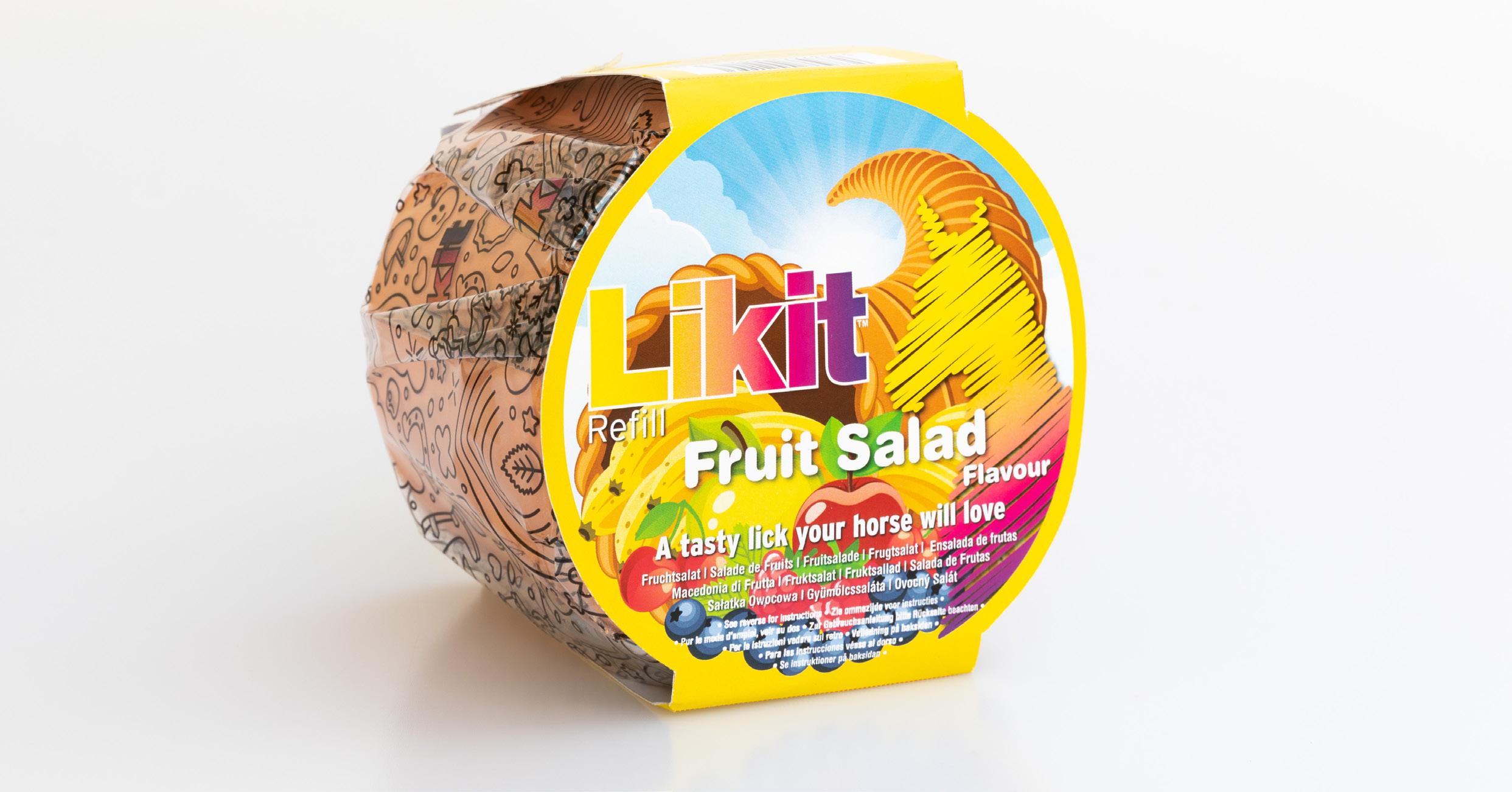
Our Likit lovers may have already noticed some changes to the Likit Refill packaging. The hard plastic shell is being phased out and has been replaced with an easy-to-open, recyclable outer plastic wrap on new Likit batches. Overall, there is 97% less plastic used!
Your pony can enjoy his or her Likit as normal, and you’ll dispose the packaging knowing you’re being kinder to the planet. Plus, how cute are the illustrations on the new wrap?!
For the next few months, packaging may vary across Likit flavours as old stock sells out. The full transition will be done soon!
Find Likit online and in-store at Western Shoppe. Learn more at www.westernshoppe.com
My pony never stands at the mounting block. I didn’t mind initially, but now it’s really making me nervous. What can I do to fix this?

First and foremost, rule out pain or discomfort as a reason for this behaviour. It’s possible your pony is moving around to avoid pain when you get on. Consult a vet and saddle fitter before moving on to training him to stand still. Assuming pain has been ruled out as a possible cause, think about training him as a step by step process. He has already learned this habit of moving around, so now you have to do quite a bit of groundwork for him to unlearn it.
Start with desensitising him to the mounting block. Lead up to the mounting block, jump around next to him and get on and off the block, but don’t actually try and mount. When he is used to this, teach him the word ‘stand’. Lead him up to the block, stand him, tell him to stand, and then treat him and give him scratches. Slowly build on this over time. For example, stand one foot in the stirrup and when he doesn’t move, reward him. The next step can then be putting weight into the stirrup and rewarding him. Continue in this way to break the process down into the smallest steps you can think of until you eventually get on.
I’m a relatively novice rider looking to buy my first pony. Any tips on what kind of pony I should be looking for?
Depending on your budget and confidence, generally, a schoolmaster (a pony who has a great deal of experience) is a good choice for a novice rider as he will be able to help you while you are still learning. A younger pony with a good temperament is also an option for you. Temperament is extremely important when you’re at a novice level, as you will make mistakes. You’re allowed to, that’s part of learning, but a pony who can compensate and not have a meltdown when you do is essential. Your instructor knows you best and understands your needs and skill level, so trust them to find a pony that’s right for you. Try as many ponies as you can, and you’ll also get a feel for what works for you. Some people like hot ponies, and some prefer less forward-going ones. Between you and your instructor, make a choice and then involve a vet to ensure the pony is sound and healthy before you buy him. With a thorough approach, you should be able to find the perfect match.
My pony really doesn’t like dogs and can get quite aggressive when they come near him. Is there anything I can do to make him more comfortable around them?
Ponies often have past trauma we know nothing about. It’s possible your pony has had a negative experience with dogs and, as a result, has become defensive.
If this is the case, you may never completely get rid of his fear. Desensitising him to dogs and treating him when he doesn’t display an aggressive reaction could help calm him, but you would have to be careful as his aggression could potentially harm the dogs (and you!). Ask an adult to help you and get them to bring a dog up to a distance where your pony is comfortable and slowly start getting closer and closer from there. Don’t bring the dog up to him from the front, but rather from the side so he can see them properly. As the dog gets closer and the pony shows no reaction, reward him. If he starts showing aggression, move the dog out of his space and try again from further away. It will take time, but if you keep working on it, you should see an improvement.

How often should my pony be dewormed?
This depends on where your pony is and how stringent your stableyard is with hygiene in the paddocks etc. If you’re at a yard where new ponies come in and out regularly, you’ll most likely have to deworm more regularly, so keep that in mind. Ponies also have to take different dewormers at different intervals to target an array of parasites. The best way to approach deworming is to send a faecal sample to your vet so they can analyse whether you need to deworm and also tell you which dewormer to use to target the correct parasite with the correct medication. Your stableyard owner or manager should have your pony on a schedule for checking for worms, so it’s best to stick to that, and if you have any specific concerns, you can address these with your vet.

My pony has recently started tossing his head. How can I stop him?
If this behaviour is recent, and you’ve never had this problem before, rule out all veterinary causes as quickly as you can. Sudden head tossing could be due to pain or discomfort. It’s also possible an equine dentist needs to come out and have a look at his teeth. A bit fitter is also recommended in situations like these, as they can take a mould of your pony’s mouth to check whether the bit you use is causing the problem. If you’ve exhausted these options, the problem could be behavioural, related to your saddle, or even the type of work he is doing. For an issue like this, we recommend you consult as many experts as you can.

Can you find your way through the maze?
Can you spot all 10 differences?
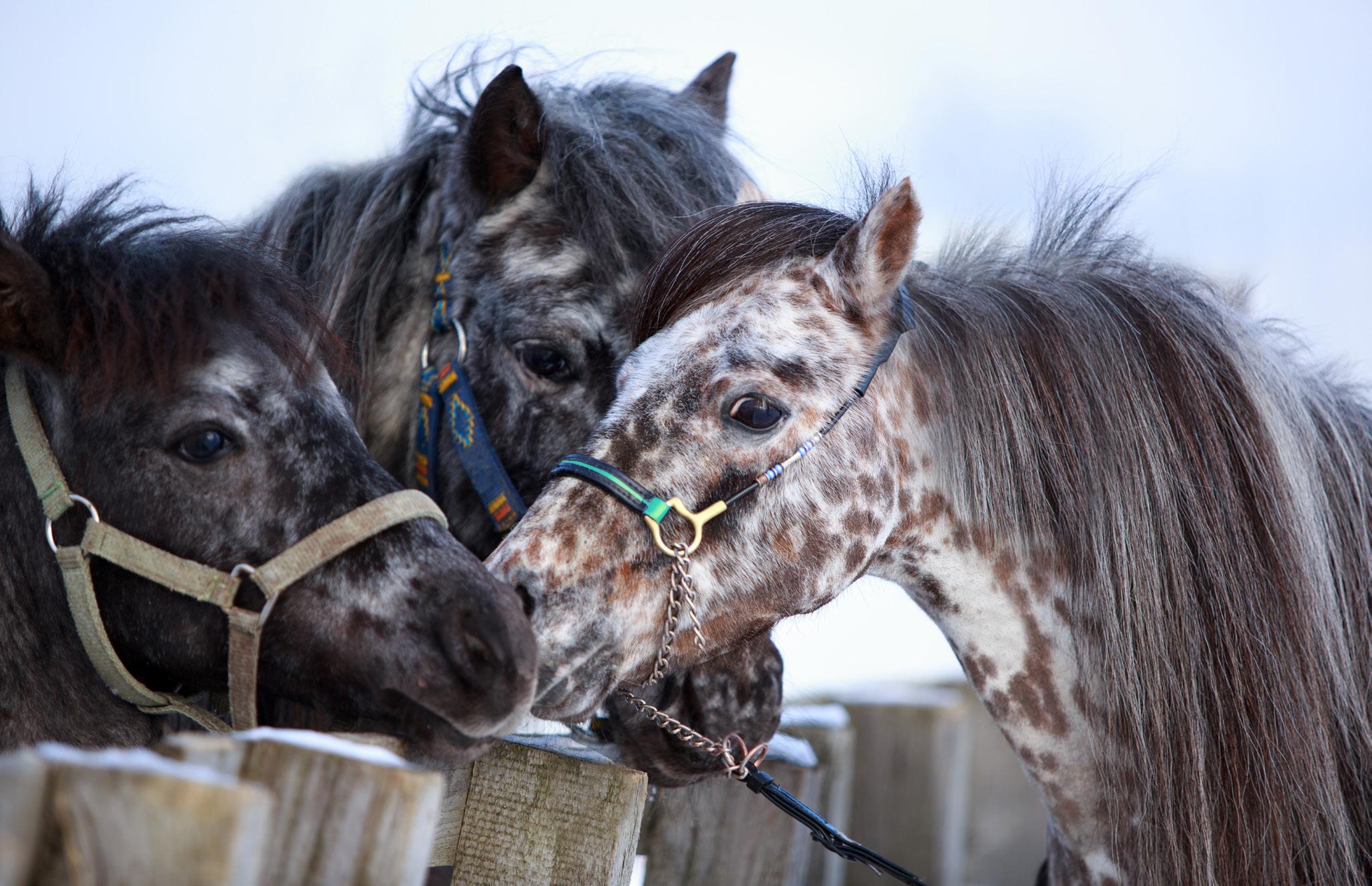

Can you find all the words from the list?
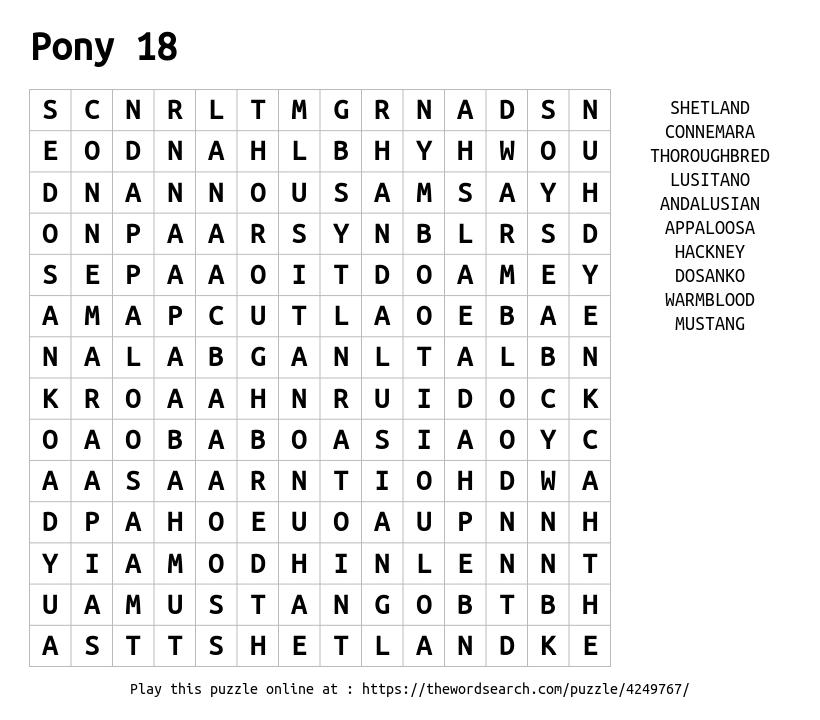
Shetland | Andalusian | Lusitano | Warmblood | Thoroughbred | Connemara
| Hackney | Dosanko | Mustang | Appaloosa
Can you still remember these Derby jump names?
1. The Table Top
2. The Rustic Oxer
3. The Stile
4. The Blue and Red Liverpool
5. The St Andrew’s Cross
6. The Hedge
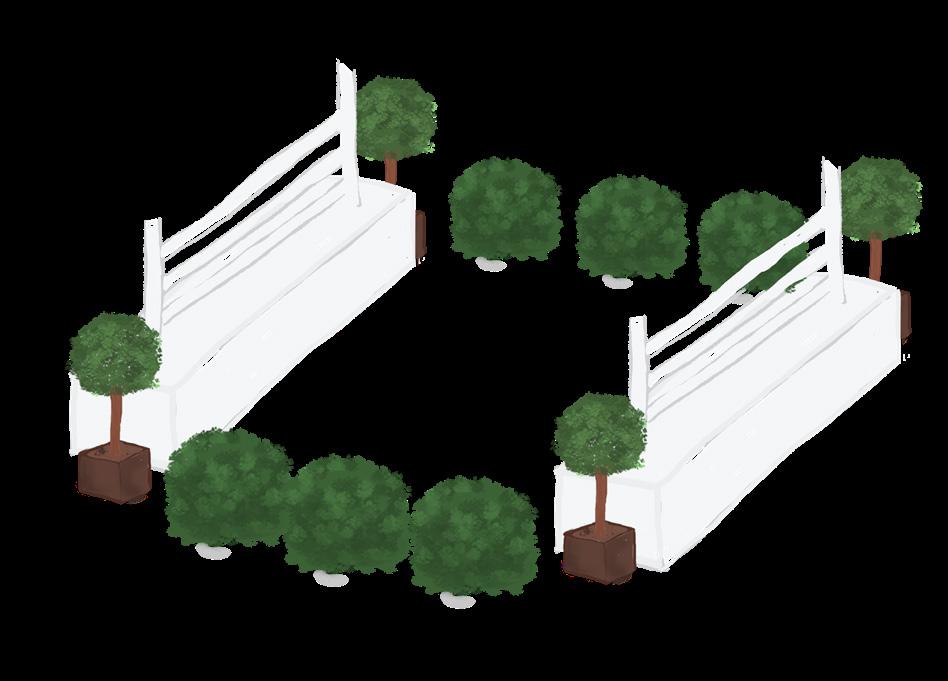
7. The Steps
8. The Bank and Planks
